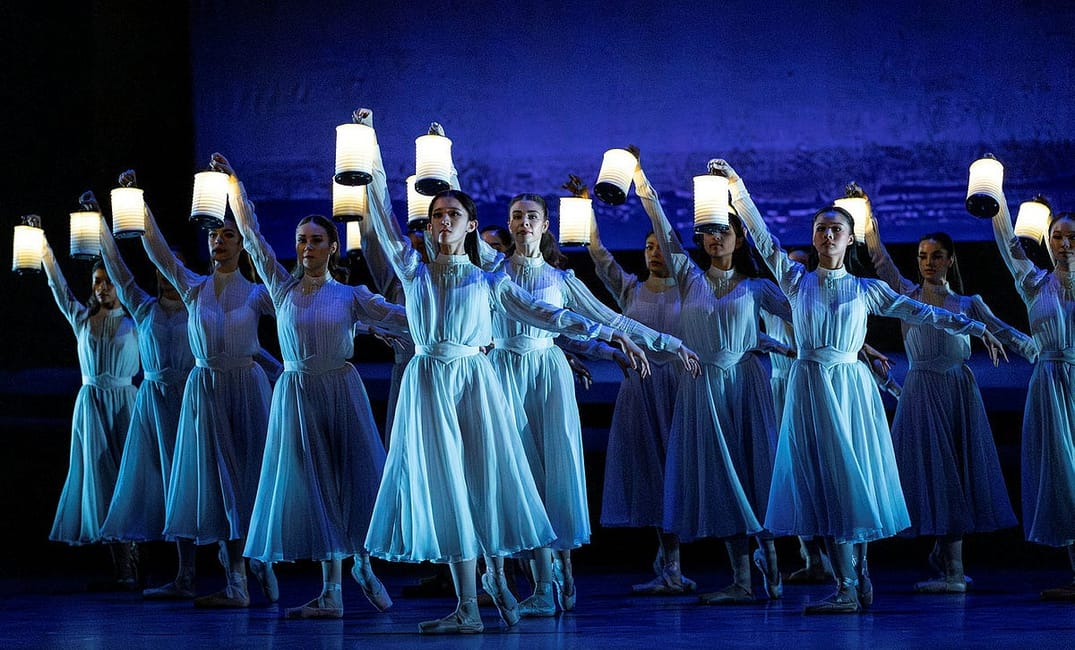I always thought ballet would be a music box come to life. A dainty princess twirls in a stiff tutu while a prince solemnly assists, and the whole performance would serve up a tax-free inheritance in pointe shoes — polished, rarefied, and untouched by mortal concerns like gravity or sweat.
In reality, one heroine fumbles every life decision and ends up in a swamp. Others create an existential dread music video about AI that’s directed by Daft Punk. And somewhere, an army of ghostly women have formed a Kill Bill squad to dance their ex-lovers to death.
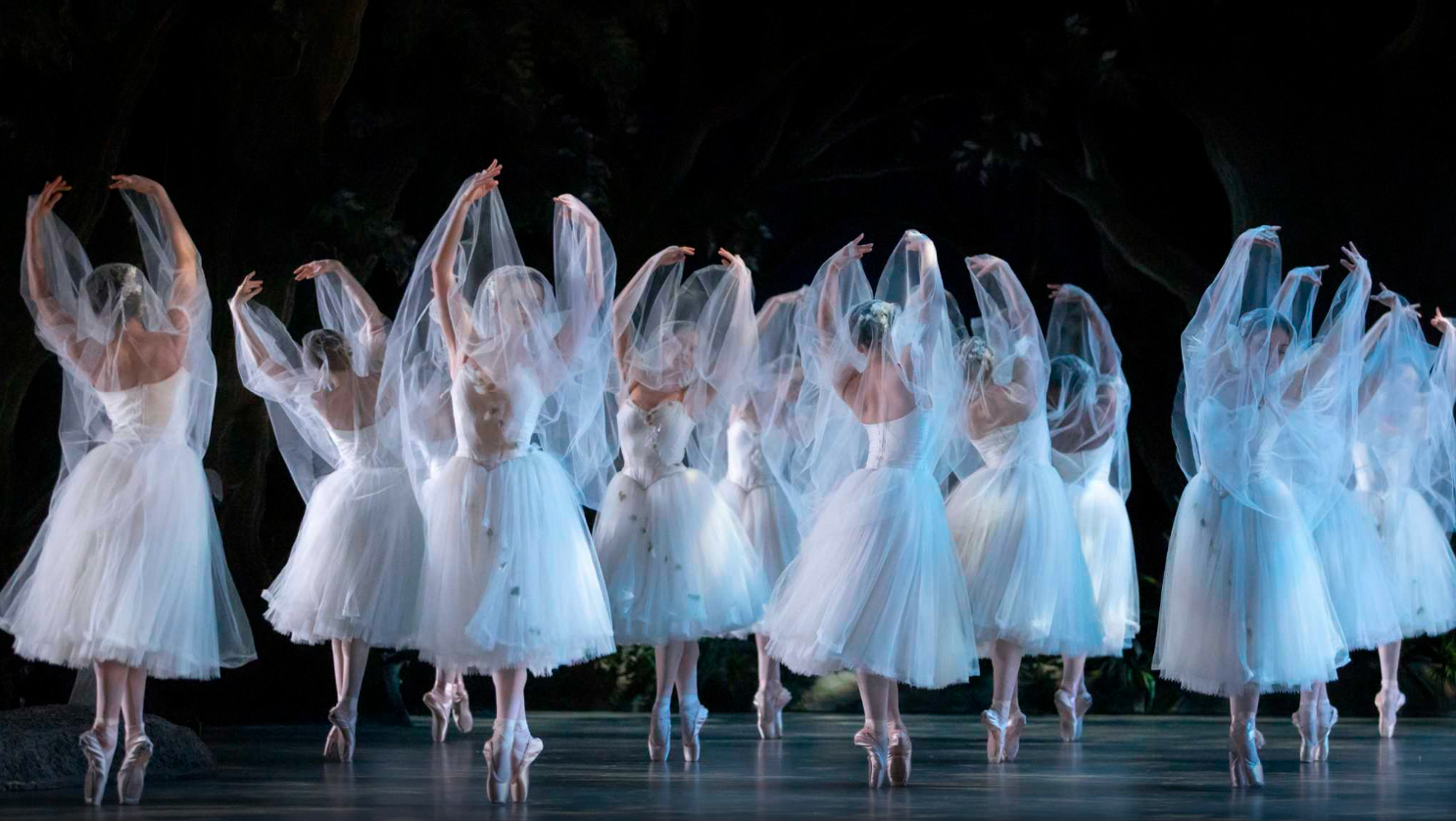
Then comes Raymonda, a 19th-century prima ballerina in a world of men, but now she’s holding all the cards: She can marry Harry, mess around with Ike, and be Dr. Quinn, Medicine Woman. At least, that’s Creative Director Tamara Rojo’s take for San Francisco Ballet.
Our OG heroine is a noblewoman from 1898 and has perfect posture, but minimal personal agency; She twirls for the affection of two men, one a war hero, the other a bad boy. One lives, the other dies — and in between, Raymonda decorates the conflict with flawless footwork.
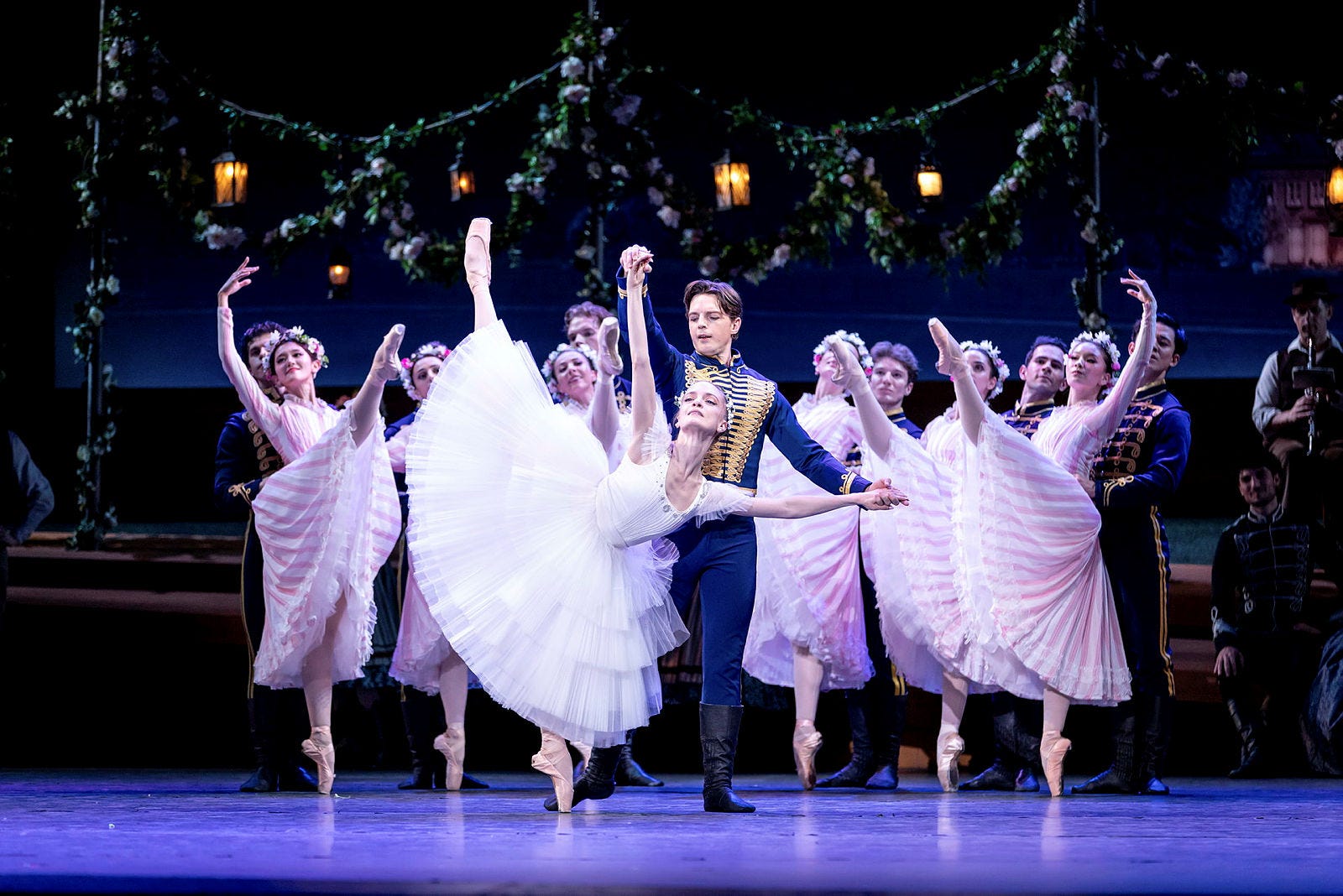
Structurally speaking, Raymonda hasn’t strayed too far in Rojo’s recent update, which puts a feminist perspective on choreographer Marius Petipa’s original work. The love triangle remains, but no one dies now, and our protagonist swaps her noble title for some overlap to Florence Nightingale — who history remembers for turning war hospitals from death traps to functional clinics.
I guess the Nightingale bit threw me a little when attending the opening on March 1st. I expected Sasha De Sola’s pointe shoes to flutter across the battlefield as she bent to tie a tourniquet around a beautifully fallen dancer. But her real conflict was still one of the heart — now with a desire for career, too. So it’s a bit more like a love quadrangle when you factor in the nursing.
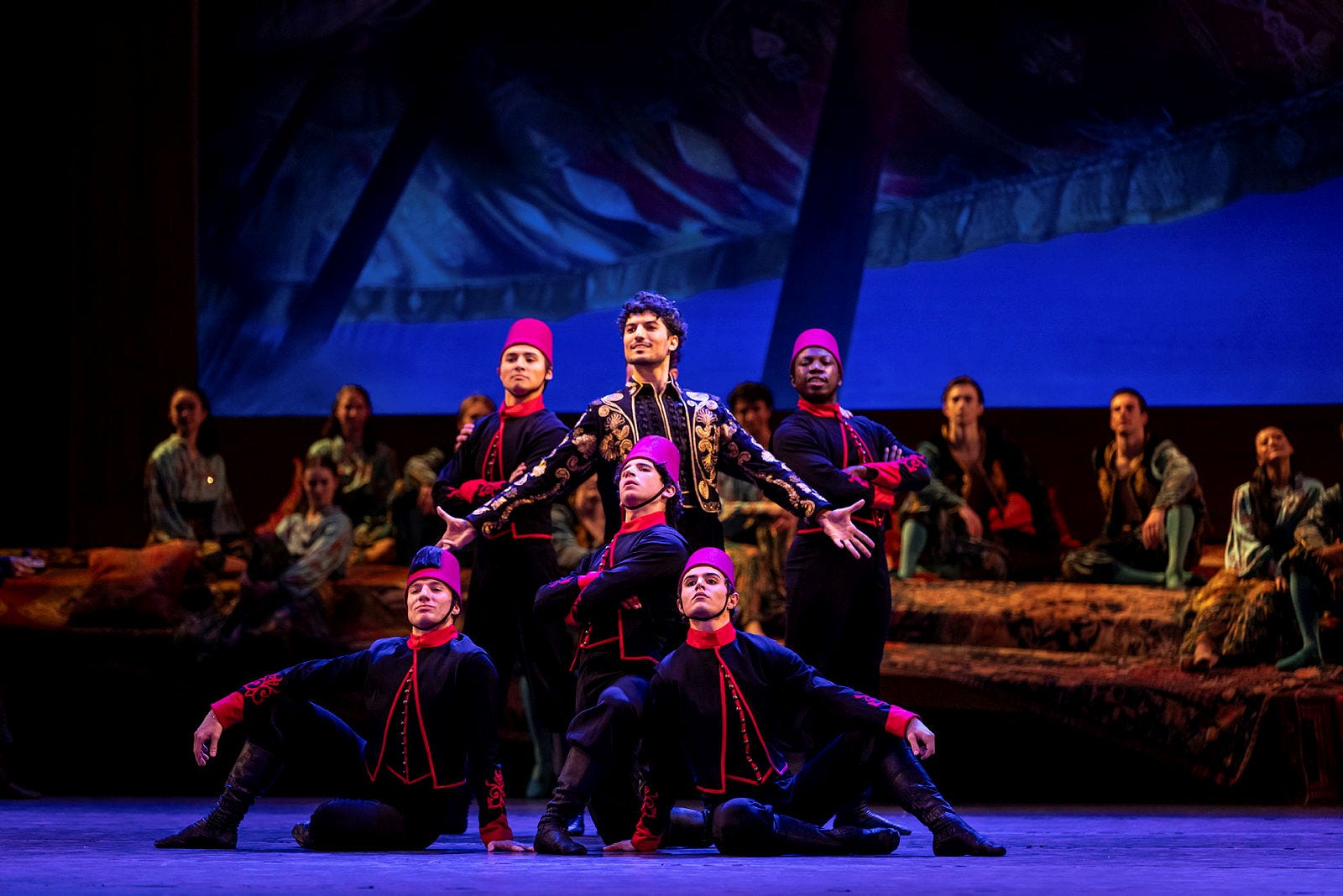
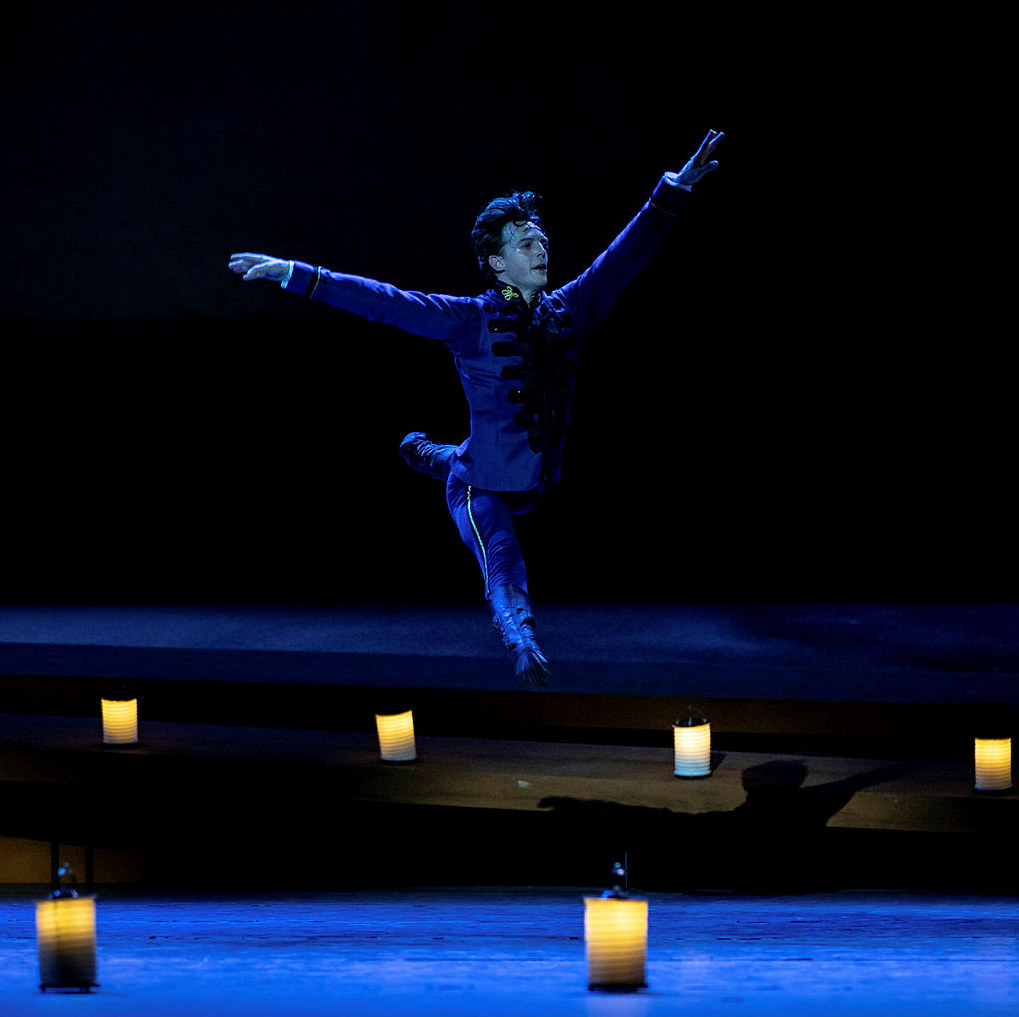
This brings gender politics a full century ahead, but it gave me more 1990s-00s Wedding Planner or Sweet Home Alabama; Raymonda plots her life but often though her suitors’ framing. Jean, the golden retriever fiancé with a stable future, and Abdur, the dark-and-brooding bad decision that she obviously wants to make.
I feel unwilling nowadays to publish unkind words about SF Ballet; They are all so amazing at what they do, not to mention welcoming, athletic AF, and ahead of the curve on modern dance. So I’ll only note that Raymonda was longer and quieter than, say, a human wave of bodies folding like fallen dominoes, or a mash-up of foot fetishes meets threeways and murder.
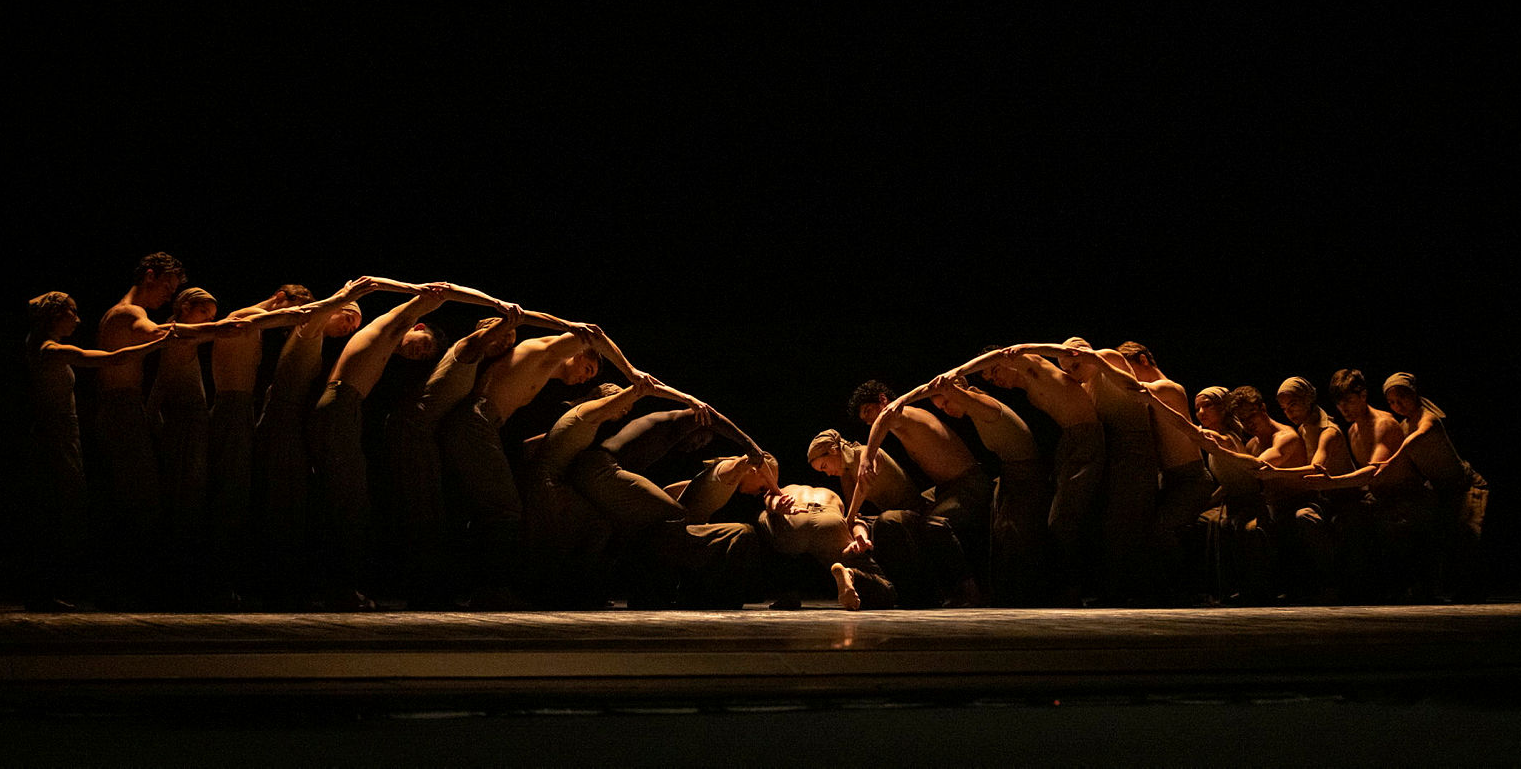
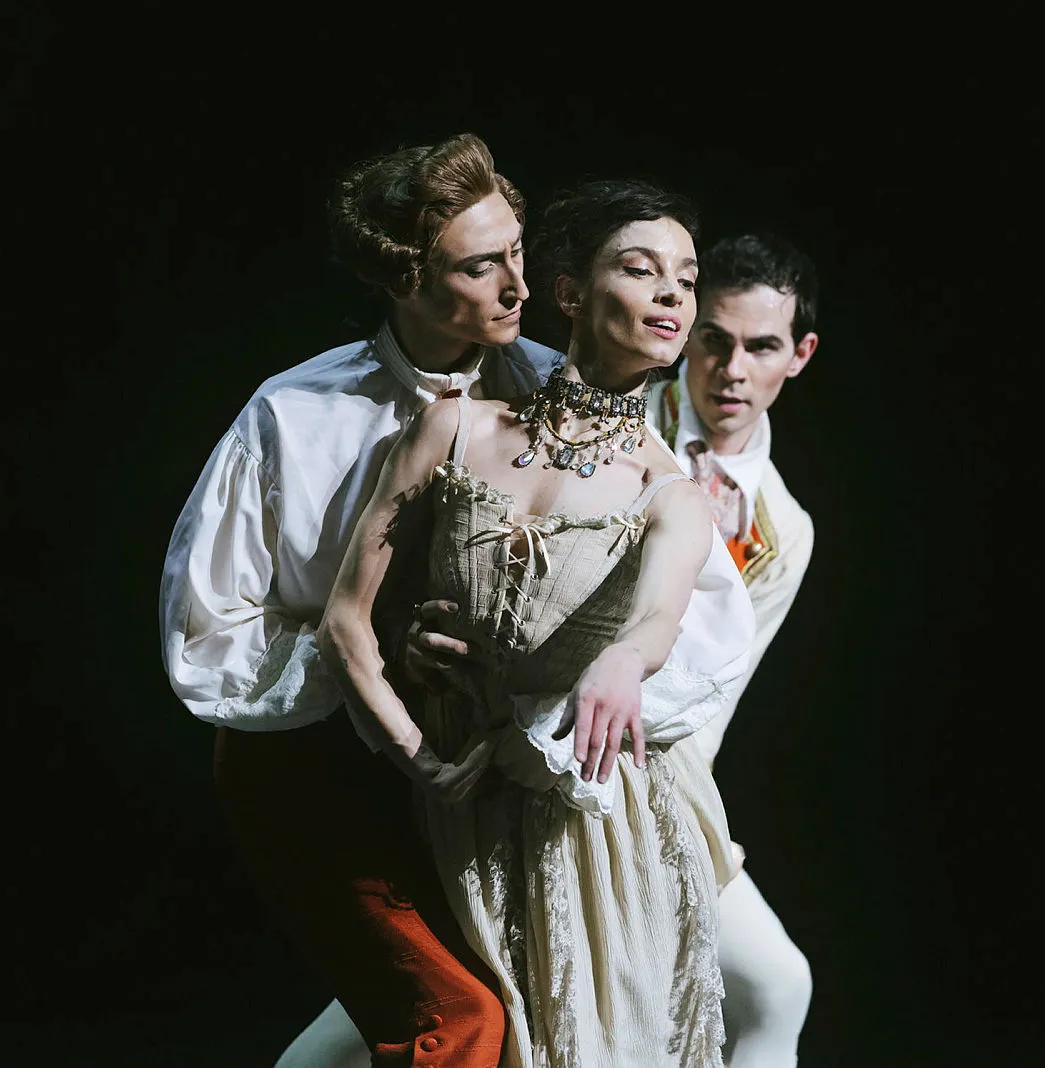
I enjoyed Rojo’s updates in Raymonda, and also found it clever to freshen up a legacy work — classical purists got the beauty they craved while also moving into the present.
“So often, the themes and narratives of these works no longer fit our purpose today,” Rojo told me just prior to the opening. “I wanted Raymonda to be a fully-realized woman with her own desires and choices.”
The most hauntingly beautiful moment came from the women with lanterns, weaving across the stage in an ethereal procession — eerily weightless, like figures from a dream. In a war story, their glow might have been harsh, but here it was wistful, filled with a sense of something left unsaid.
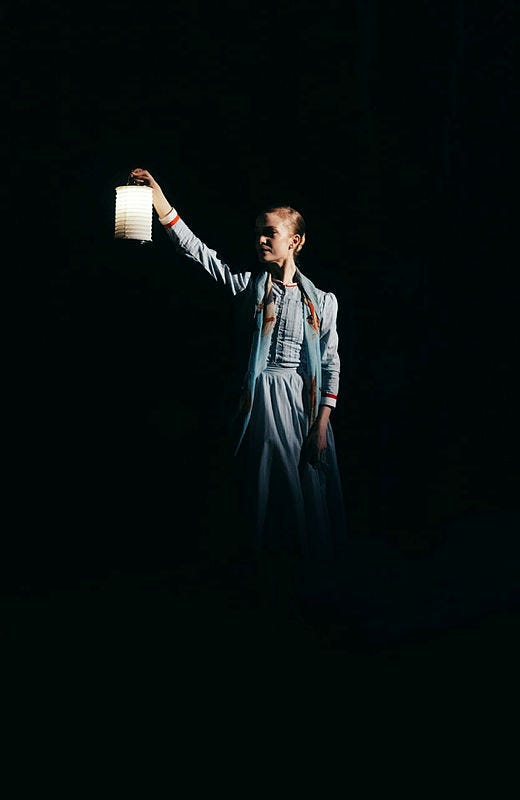
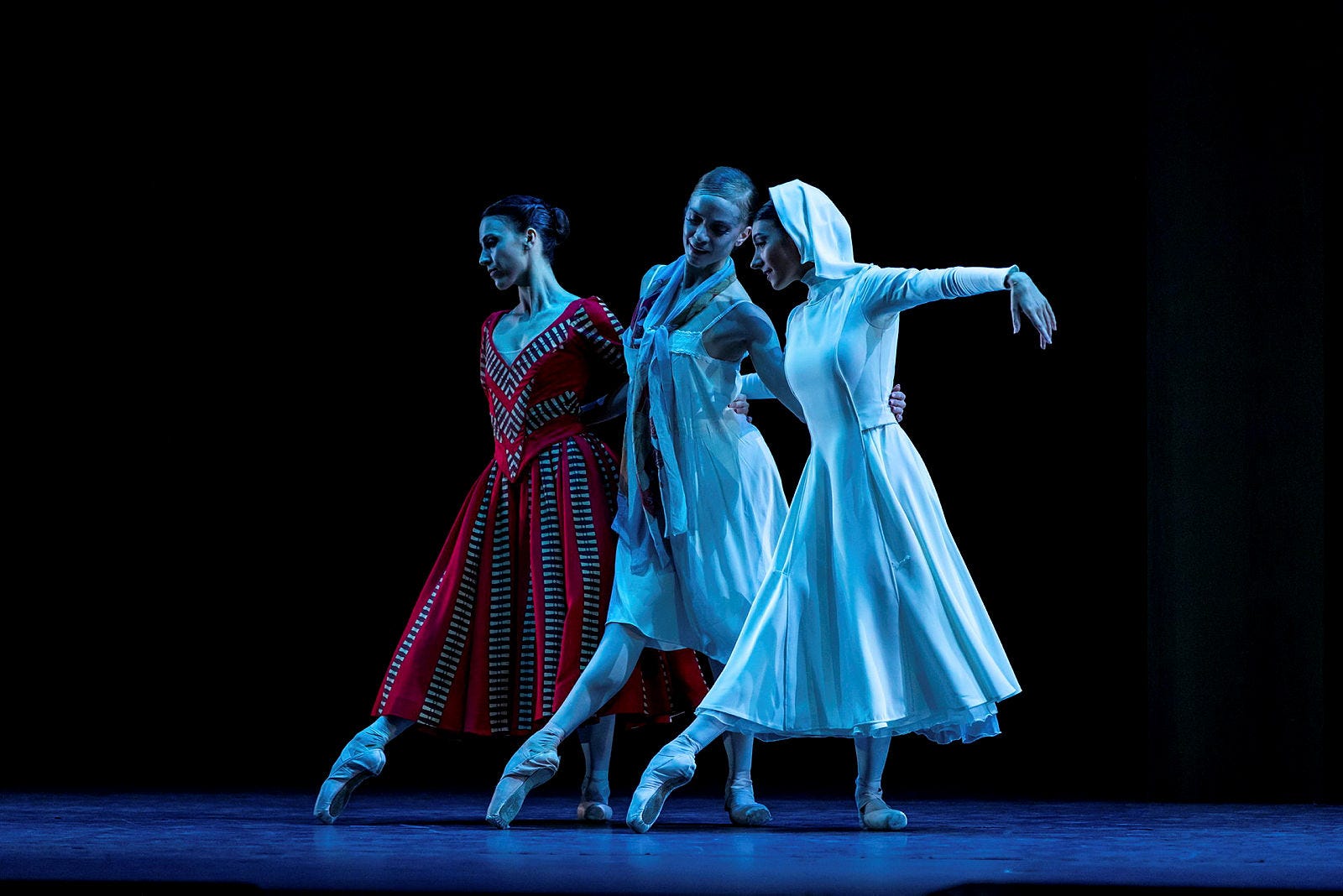

De Sola commanded a stage presence worthy of the headliner she is; her Act II spins so dazzling that I forgot where we were in the story. Jasmine Jimison didn’t need dialogue to own the stage — as a formidable guardian, her deliberate movement anchored the ballet. So, too did Rojo deliver on the men’s roles.
“The men and the corps today are capable of so much more than they were in Petipa’s time,” Rojo told me. “I wanted to give them something just as challenging as what the women perform.”
These supporting parts — often relegated to lifting duties in classical dance — instead had full-bodied, technically demanding sequences that made them feel integral to the ballet’s fabric. The men weren’t just background furniture; they leaped, spun, and pushed the ballet forward.

Raymonda is beautiful, richly considered, and intellectually reflective. If you’re looking for a ballet that leaves you breathless: This one moves at its own deliberate pace. Some ballets captivate with their intensity, this one invites us to lean in and listen. If you like classic silhouettes and exceptional dancing — then yes, this is the ballet for you.
I personally am looking forward to the surprising horrors Frankenstein might bring later this month.
Saul Sugarman is editor in chief of The Bold Italic.
The Bold Italic is a non-profit media organization, and we publish first-person perspectives about San Francisco and the Bay Area. Donate to us today.



